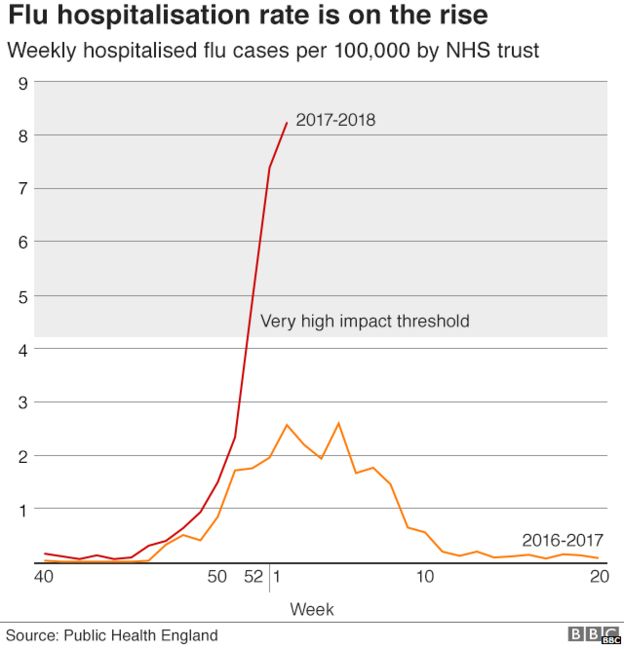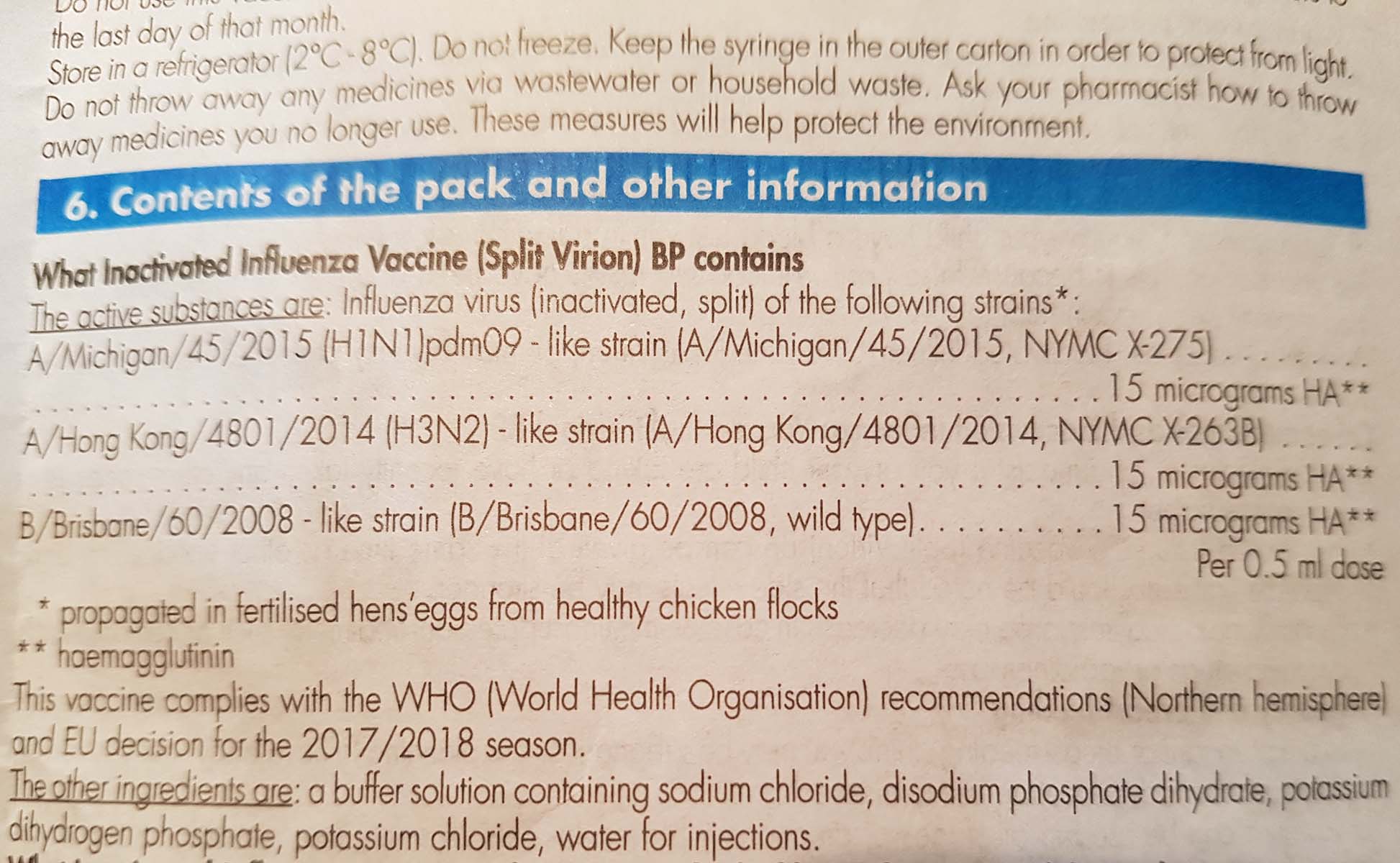Flu death toll hits 193 after NHS failed to vaccinate against it
 Statistics from Public Health England show a 2.5 fold rise in cases in the last two weeks
Statistics from Public Health England show a 2.5 fold rise in cases in the last two weeksFlu has reached epidemic levels in some parts of the UK with the “Japanese” strain now dominant.
The statistics show that epidemic levels have already been reached in the city of York, with Herefordshire and north Somerset close behind.
Flu viruses are split into three different types: A, B and C Influenza, with lots of different strains within these.
Meanwhile, the Royal College of GPs said its Research and Surveillance Centre (RSC) found the number of people visiting their doctor with flu has gone up by more than 150 per cent since the start of the year.
It said an estimated 31,300 patients attended their GP practice with influenza-like-illness (ILI) in England between January 8 and 14 – a rise of more than 9,000 on the previous week.
Professor Paul Cosford, PHE medical director, said: ‘Our data continues to show that more people are visiting GPs with flu symptoms and we are seeing more people admitted to hospital with flu.
‘We are currently seeing a mix of flu types, including the A(H3N2) strain that circulated last winter in the UK and then in Australia.
Senior doctors have accused health officials of fuelling the crisis, by attempting to cut costs on vaccines.
Two types of vaccine were available to the NHS - a £5 trivalent version covering three main strains of flu, and an £8 quadrivalent version protecting against four strains.

But NHS senior managers say GPs were put under pressure by health officials to choose the cheaper option - excluding the Japanese strain now spreading through hospitals.
Most injected flu vaccines protect against 3 types of flu virus:
- A/H1N1 – the strain of flu that caused the swine flu pandemic in 2009
- A/H3N2 – a strain of flu that mainly affects the elderly and people with risk factors like a long-term health condition. In 2017/18 the vaccine will contain an A/Hong Kong/4801/2014 H3N2-like virus
- Influenza B – a strain of flu that particularly affects children. In 2017/18 the vaccine will contain B/Brisbane/60/2008-like virus
A big problem is that the virus keeps evolving before the vaccine is ready.
And this year's vaccine being not as effective being only 20-30% .
Every year Seasonal flu usually peaks in the UK in January and February.
Most people have some immunity to it, having had flu before, or a vaccination.
Those who catch flu may feel very ill, but will normally recover in about a week - although it can be deadly in a small number of cases, particularly among young children and the elderly.
Pandemic flu occurs when a new virus strain emerges from an animal.
In 2009 swine flu spread swiftly across the world, infecting at least 171 countries and killing 457 people in the UK.
The next pandemic flu may not occur for 40 years, or it could be next year.
Government Winter Flu Vaccination Document - Who should have it and why.
Although the best time to get aflu jab is October and November, the vaccinations are still available now.
The problem with influenza
Unlike some other bugs, it’s a tricky shape-shifter. Because of this, the vaccine against it is not nearly as effective as others. For example, a complete course of MMR vaccine is 97% effective at preventing measles; two successive doses of the chicken pox vaccine are about 98% effective; and tetanus toxoid is about 100% effective. What’s more, these impressive figures stay relatively constant year on year.
In contrast, the success of the annual flu vaccine varies dramatically, from a modest 40-60% efficacy. Some years it is much worse – as in 2004-05, when its effectiveness was only 10%.
Welcome to Watford London UK!
Thanks for stopping by. We welcome your comments.